Hot water: centralised or decentralised ?
Comparison between
centralised and decentralised hot water solutions
When deciding whether a centralised or decentralised solution should be used for the hot water supply of a building, various factors must be taken into account. Investment costs, installation effort, pipe lengths, comfort, energy and water consumption all play a decisive role. The system should also provide hot water for the individual applications in the right temperatures and in sufficient quantities, ideally even for an unlimited period of time and yet still be economical.
Compare first, then decide!
Energy losses
in comparison
Central hot water supply
long water lines
40% Energy loss
60% Usable hot water energy
Decentralised hot water supply
short water lines
3% Energy loss
97% Usable hot water energy
Further information on this topic can be found
in our catalogue "E instantaneous water heaters".
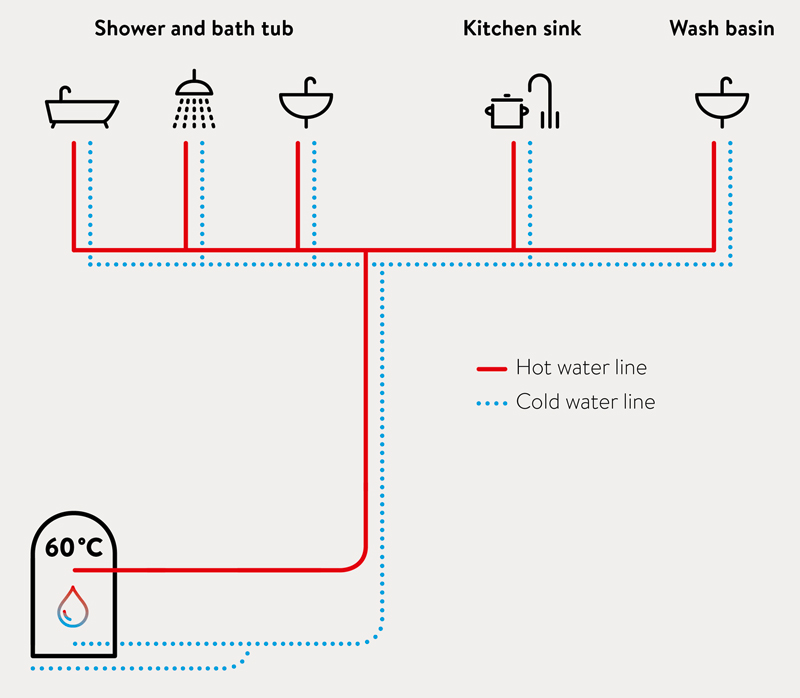
Very common: Central Supply
Long water lines
+ large water tanks
+ excessively high water temperature
= energy and water waste
Coupling the hot water supply to the central heating system is still very common. Water is heated in a central tank and then transported to the various points-of-use through an additional pipe system. Due to hygienic requirements, the water must be preheated to at least
The “Forschungsgesellschaft für Energiewirtschaft" divides energy losses in centralised hot water preparation into circulation, distribution, start-up and storage losses. In a one-family home, these losses add up to at least
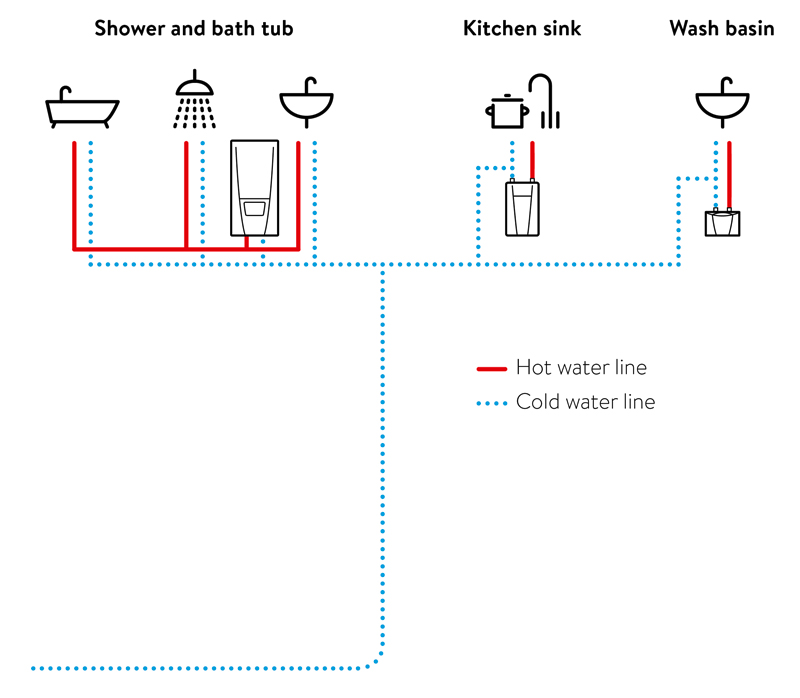
Modern and economical: decentralised hot water supply
Short water lines
+ correct water amount
+ correct water temeperature
= energy-efficient, based on demand, modern
In decentralised systems, the hot water supply is separated from the heating system. Electric instant water heaters meet the specific requirements for each application if installed directly at the various points-of-use. The hot water is available without any lead times. Only the required amount of water is heated. Additional pipe systems are not necessary. There is also no need for circulation pumps and hot water tanks, which saves installation and operation costs. The small units allow for a “hidden” installation in wall nooks or behind panelling. The central heating system can now be adjusted precisely to the requirements of the building and be turned off completely during the summer.
Circulation and storage losses are eliminated, since water is not preheated and stored in large quantities. The distribution, start-up and systems losses only amount to
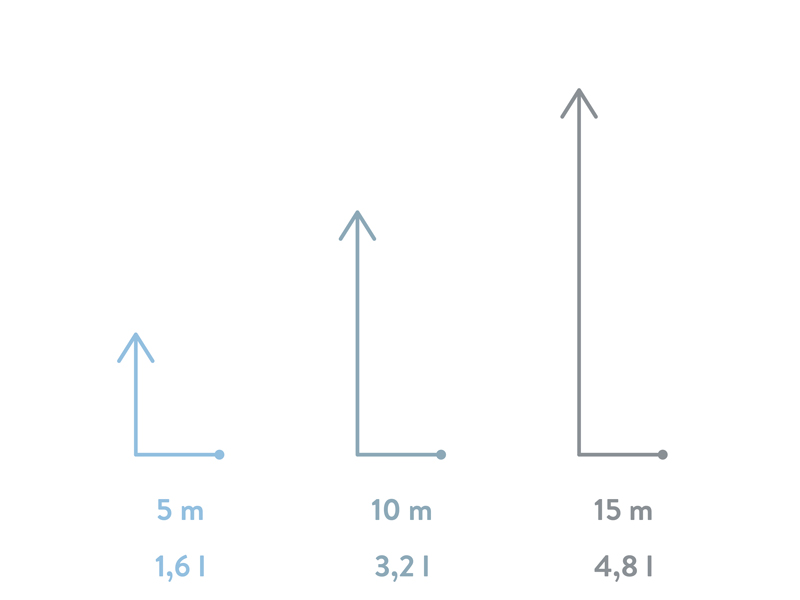
Short water lines
With a central hot water supply, long water lines and the associated waiting times are inevitable due to the system. With a pipe length of e.g. 15 metres, there are approx. 4.8 litres of cold water in the pipe system, which must first be removed from the pipe. Only then warm water does flow out of the fitting. This can sometimes take 30 seconds!
With a decentralised hot water supply, unnecessarily long water paths are avoided, which cause high water costs or considerable heat losses from hot water circulation. The instantaneous water heater is ideally installed directly at the point of use. Warm water is available without waiting time, saving water and time!
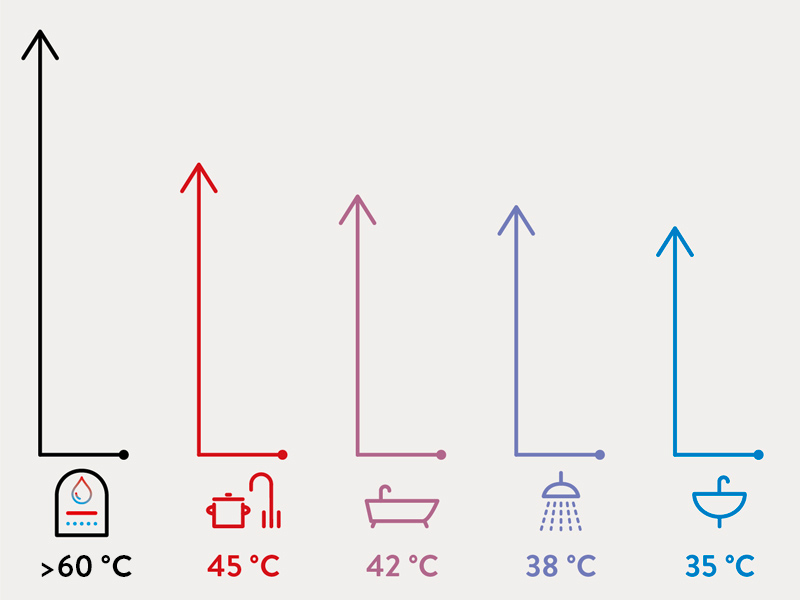
Correct water temperature
In hot water storage tanks, the water is heated to high temperatures above 65 °C due to the required quantities of mixed water. Another reason for these high temperatures is more hygienic: in order to avoid the health-endangering increase of Legionella in drinking water, the hot water must be regularly heated to at least 60 °C when stored. The constant heating of large quantities of water for thermal disinfection costs an unnecessary amount of energy, especially since only relatively low temperatures are actually used.
Warm water is actually used at much lower working temperatures: 35 °C is sufficient for hand washing, and approx. 42 °C is required for bathing when filling the bathtub. The temperature is also around 38 °C for showers and most activities in the kitchen can be carried out at 45 °C.
It is more efficient to heat the water exactly to the temperature required at the respective point of use using electronic electric instantaneous water heaters. The addition of cold water can thus become superfluous. According to the German Drinking Water Ordinance (Trinkwasserverordnung), no legionella test is necessary for instantaneous water heaters. Therefore, decentralised water heating is more hygienic and efficient.
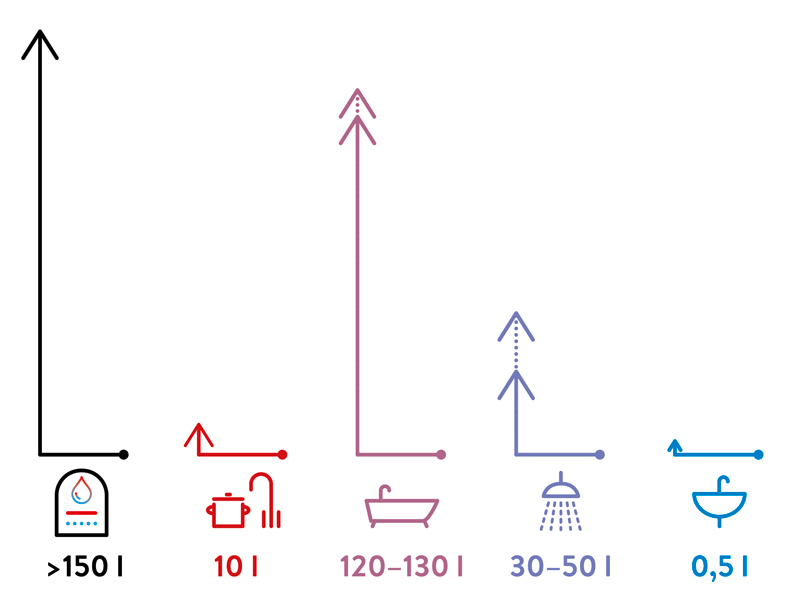
Correct amount of water
In centralised hot water storage systems, water is stored in large quantities (e.g. 150 litres or more) without being used in full.
In fact, much smaller quantities are required for typical hot water situations: as a rule, only 10 litres of water or less are required for flushing in the kitchen. When bathing, 120 to 130 litres of warm water are usual, when showering, approx. 30 to 50 litres are sufficient. To clean hands at the sink, only half a litre of water is often sufficient.
It is therefore more efficient to heat only as much water as is actually used at each tap using electric instantaneous water heaters as required.
